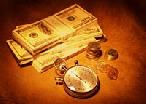
 |
|
| Financial Terms | |
| Distributions |
|
Information about financial, finance, business, accounting, payroll, inventory, investment, money, inventory control, stock trading, financial advisor, tax advisor, credit.
Main Page: accounting, financial advisor, payroll, money, credit, inventory control, business, inventory, Also see related: buy home, real estate, property, homes, home financing, home buyer, homebuying, insurance, home, |
Definition of Distributions
DistributionsPayments from fund or corporate cash flow. May include dividends from earnings, capital
Related Terms:Dollar returnThe return realized on a portfolio for any evaluation period, including (1) the change in market Geometric mean returnAlso called the time weighted rate of return, a measure of the compounded rate of Lognormal distributionA distribution where the logarithm of the variable follows a normal distribution. ReturnThe change in the value of a portfolio over an evaluation period, including any distributions made Par valueThe stated value of a stock, which is recorded in the capital stock account. Preferred stockA type of stock that usually pays a fixed dividend prior to any distributions Retained earningsA company’s accumulated earnings since its inception, less any distributions to shareholders.  annual returnThe fund return, for any 12-month period, including changes in unit value and the reinvestment of distributions, but not taking into account sales, redemption, distribution or other optional charges or income taxes payable by any unitholder that would reduce returns. CARs (cumulative abnormal returns)a measure used in academic finance articles to measure the excess returns an investor would have received over a particular time period if he or she were invested in a particular stock. Abnormal returnsPart of the return that is not due to systematic influences (market wide influences). In After-tax real rate of returnMoney after-tax rate of return minus the inflation rate. Annualized holding period returnThe annual rate of return that when compounded t times, would have Arithmetic average (mean) rate of returnArithmetic mean return. Arithmetic mean returnAn average of the subperiod returns, calculated by summing the subperiod returns Average accounting returnThe average project earnings after taxes and depreciation divided by the average Average rate of return (ARR)The ratio of the average cash inflow to the amount invested.  Cumulative abnormal return (CAR)Sum of the differences between the expected return on a stock and the Dollar bondsMunicipal revenue bonds for which quotes are given in dollar prices. Not to be confused with Dollar durationThe product of modified duration and the initial price. Dollar price of a bondPercentage of face value at which a bond is quoted. Dollar rollSimilar to the reverse repurchase agreement - a simultaneous agreement to sell a security held in a Dollar safety marginThe dollar equivalent of the safety cushion for a portfolio in a contingent immunization Dollar-weighted rate of returnAlso called the internal rate of return, the interest rate that will make the EurodollarThis is an American dollar that has been deposited in a European bank or an U.S. bank branch Eurodollar bondsEurobonds denominated in U.S.dollars. Ex post returnRelated: Holding period return Exante returnThe expected return of a portfolio based on the expected returns of its component assets and  Excess return on the market portfolioThe difference between the return on the market portfolio and the Excess returnsAlso called abnormal returns, returns in excess of those required by some asset pricing model. Expected future returnThe return that is expected to be earned on an asset in the future. Also called the Expected returnThe return expected on a risky asset based on a probability distribution for the possible rates Expected return on investmentThe return one can expect to earn on an investment. See: capital asset Expected return-beta relationshipImplication of the CAPM that security risk premiums will be Fixed-dollar obligationsConventional bonds for which the coupon rate is set as a fixed percentage of the par value. Fixed-dollar securityA nonnegotiable debt security that can be redeemed at some fixed price or according to Holding period returnThe rate of return over a given period. Horizon returnTotal return over a given horizon. Incremental internal rate of returnIRR on the incremental investment from choosing a large project Internal rate of returndollar-weighted rate of return. Discount rate at which net present value (NPV) Leveraged required returnThe required return on an investment when the investment is financed partially by debt. Market returnThe return on the market portfolio. MeanThe expected value of a random variable. Mean of the sampleThe arithmetic average; that is, the sum of the observations divided by the number of Mean-variance analysisEvaluation of risky prospects based on the expected value and variance of possible outcomes. Mean-variance criterionThe selection of portfolios based on the means and variances of their returns. The Mean-variance efficient portfolioRelated: Markowitz efficient portfolio Money rate of returnAnnual money return as a percentage of asset value. Multiple rates of returnMore than one rate of return from the same project that make the net present value Portfolio internal rate of returnThe rate of return computed by first determining the cash flows for all the Rate of return ratiosRatios that are designed to measure the profitability of the firm in relation to various Realized returnThe return that is actually earned over a given time period. Regression toward the meanThe tendency for subsequent observations of a random variable to be closer to its mean. Required returnThe minimum expected return you would require to be willing to purchase the asset, that is, ReturnThe change in the value of a portfolio over an evaluation period, including any distributions made Return on assets (ROA)Indicator of profitability. Determined by dividing net income for the past 12 months Return on equity (ROE)Indicator of profitability. Determined by dividing net income for the past 12 Return on investment (ROI)Generally, book income as a proportion of net book value. Return on total assetsThe ratio of earnings available to common stockholders to total assets. Return-to-maturity expectationsA variant of pure expectations theory which suggests that the return that an Riskless rate of returnThe rate earned on a riskless asset. Safety-net returnThe minimum available return that will trigger an immunization strategy in a contingent Soft dollarsThe value of research services that brokerage houses supply to investment managers "free of Subperiod returnThe return of a portfolio over a shorter period of time than the evaluation period. T-period holding-period returnThe percentage return over the T-year period an investment lasts. Time-weighted rate of returnRelated: geometric mean return. Total dollar returnThe dollar return on a nondollar investment, which includes the sum of any Total returnIn performance measurement, the actual rate of return realized over some evaluation period. In Unleveraged required returnThe required return on an investment when the investment is financed entirely RATE OF RETURN ON STOCKHOLDERS’ EQUITYThe percentage return or profit that management made on each dollar stockholders invested in a company. Here’s how you figure it: RATE OF RETURN ON TOTAL ASSETSThe percentage return or profit that management made on each dollar of assets. The formula is: RETURN ON INVESTMENT (ROI)In its most basic form, the rate of return equals net income divided by the amount of money invested. It can be applied to a particular product or piece of equipment, or to a business as a whole. Accounting rate of return (ARR)A method of investment appraisal that measures Internal rate of return (IRR)A discounted cash flow technique used for investment appraisal that calculates the effective cost of capital that produces a net present value of zero from a series of future cash flows and an Return on capital employed (ROCE)The operating profit before interest and tax as a percentage of the total shareholders’ funds plus Return on investment (ROI)The net profit after tax as a percentage of the shareholders’ investment in the business. Target rate of return pricingA method of pricing that estimates the desired return on investment to be achieved from the Purchase returnsA contra account that reduces purchases by the amount of items purchased that were subsequently returned. Sales returnsA contra account that offsets revenue. It represents the amount of sales made that were later returned. internal rate of return (IRR)The precise discount rate that makes the return on assets (ROA)Although there is no single uniform practice for return on equity (ROE)This key ratio, expressed as a percent, equals net return on investment (ROI)A very general concept that refers to some return on salesThis ratio equals net income divided by sales revenue. Internal Rate of Return (IRR)The discount rate that equates the present value of the net cash Return on Common Equity RatioA measure of the percentage return earned on the value of the Return on Total Assets RatioA measure of the percentage return earned on the value of the accounting rate of return (ARR)the rate of earnings obtained on the average capital investment over the life of a capital project; computed as average annual profits divided by average investment; not based on cash flow dollar days (of inventory)a measurement of the value of inventory for the time that inventory is held internal rate of return (IRR)the expected or actual rate of return of capitalthe recovery of the original investment (or principal) in a project return on capitalincome; it is equal to the rate of return multiplied by the amount of the investment return on investmenta ratio that relates income generated Internal rate of return a. The average annual yield earned by an investment during the period held. Mean a. A number that typifies a set of numbers, such as a geometric mean Constant dollar accountingA method for restating financial statements by reducing or Internal rate of returnThe rate of return at which the present value of a series of future book rate of returnAccounting income divided by book value. eurodollarsdollars held on deposit in a bank outside the United States. internal rate of return (IRR)Discount rate at which project NPV = 0. rate of returnTotal income per period per dollar invested. Constant dollarsSee real dollars. Current DollarsA variable like GDP is measured in current dollars if each year's value is measured in prices prevailing during that year. In contrast, when measured in real or constant dollars, each year's value is measured in a base year's prices. EurodollarsDeposits denominated in U.S. dollars but held in banks located outside the United States, such as in Canada or France. ReturnSee yield. Absolute Right of ReturnGoods may be returned to the seller by the purchaser without restrictions. Right of ReturnA sales agreement provision that permits a buyer to return products purchased Related to : financial, finance, business, accounting, payroll, inventory, investment, money, inventory control, stock trading, financial advisor, tax advisor, credit. |